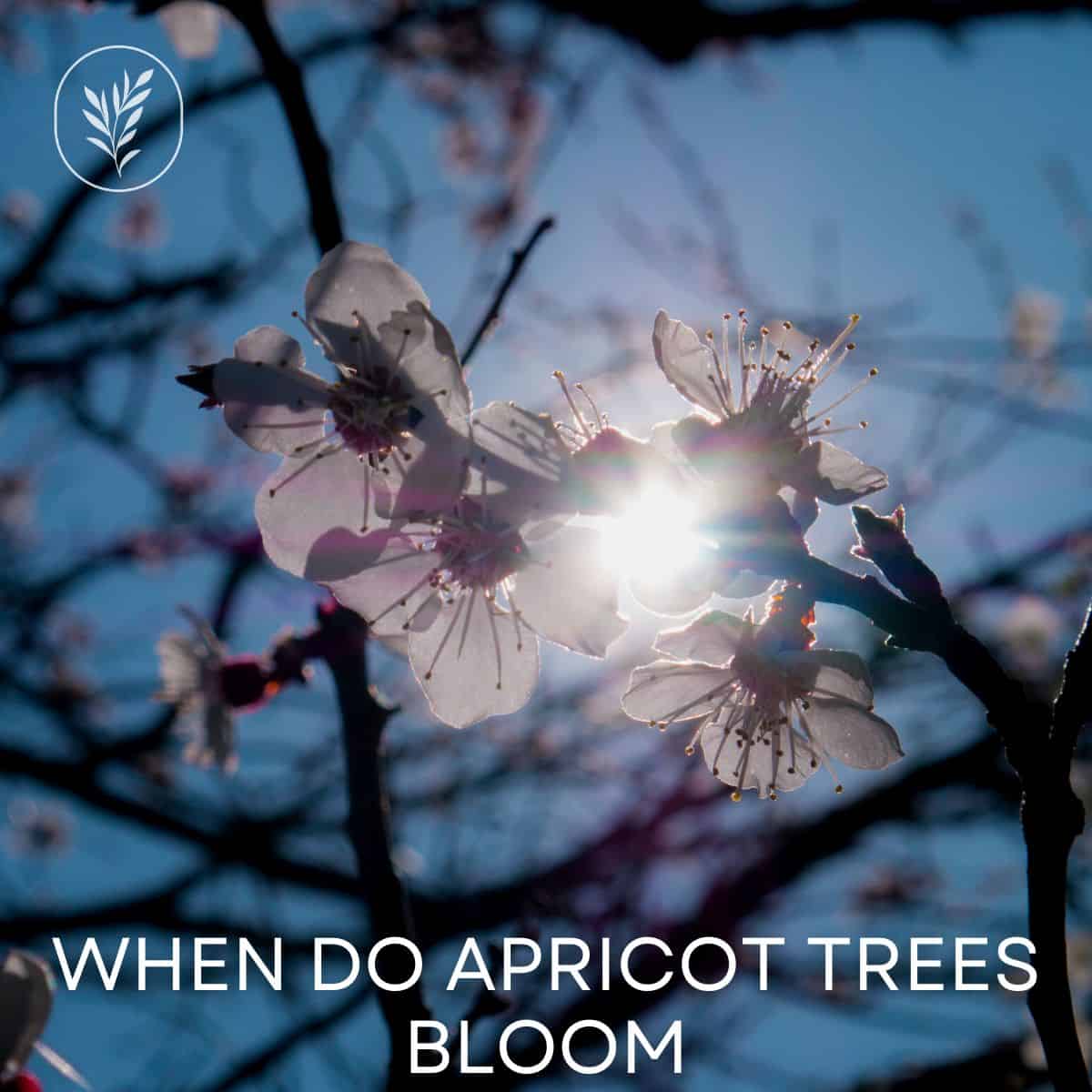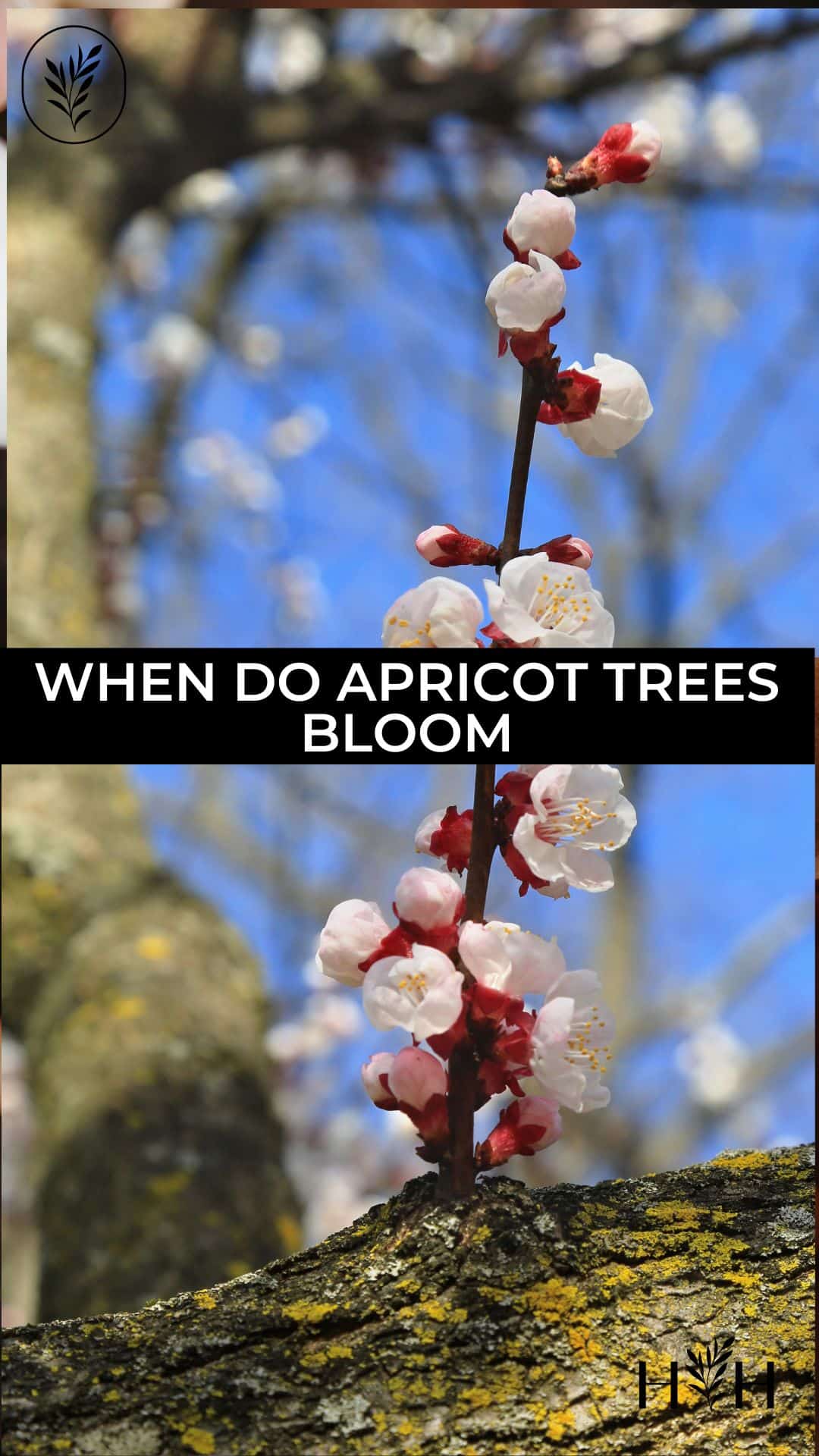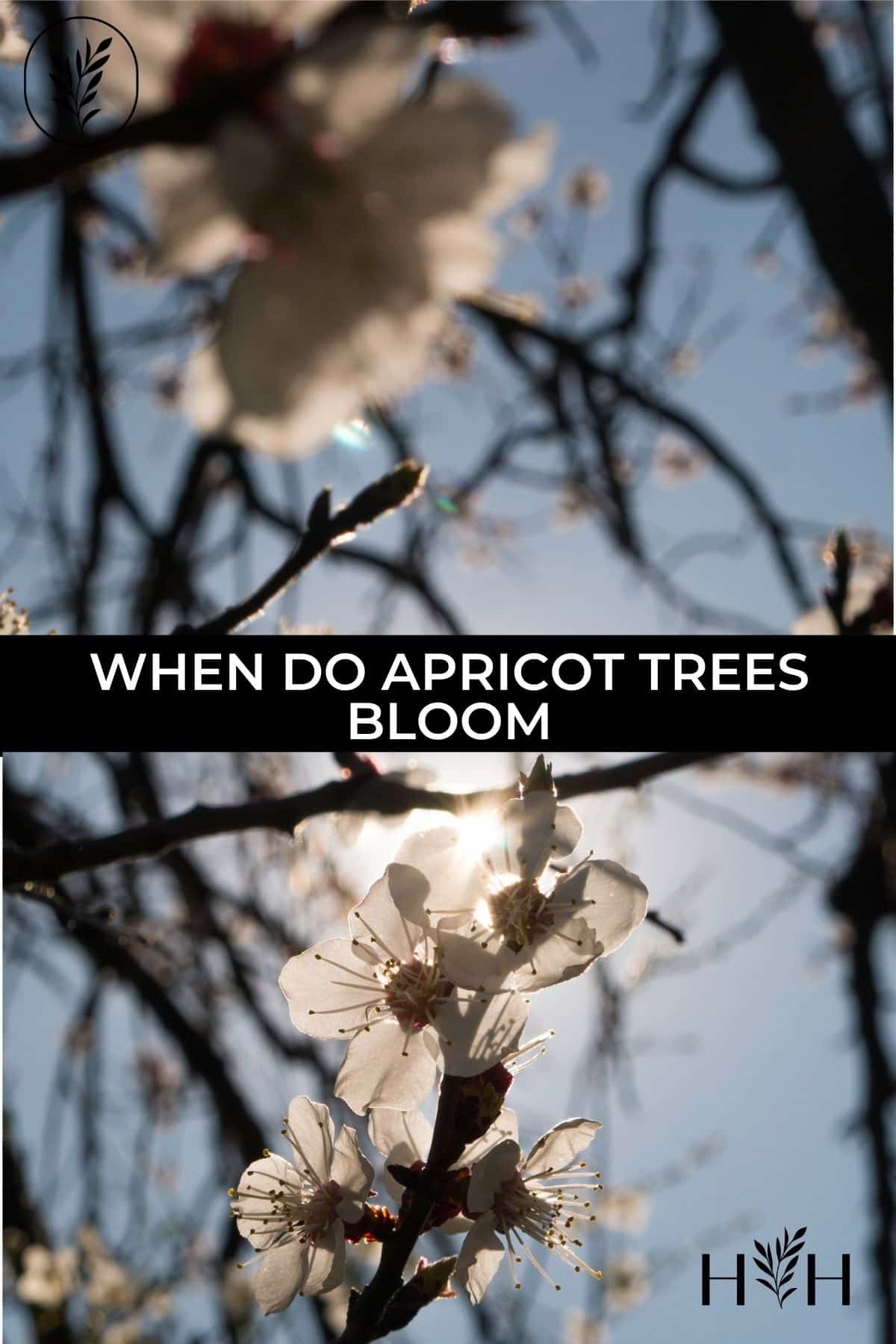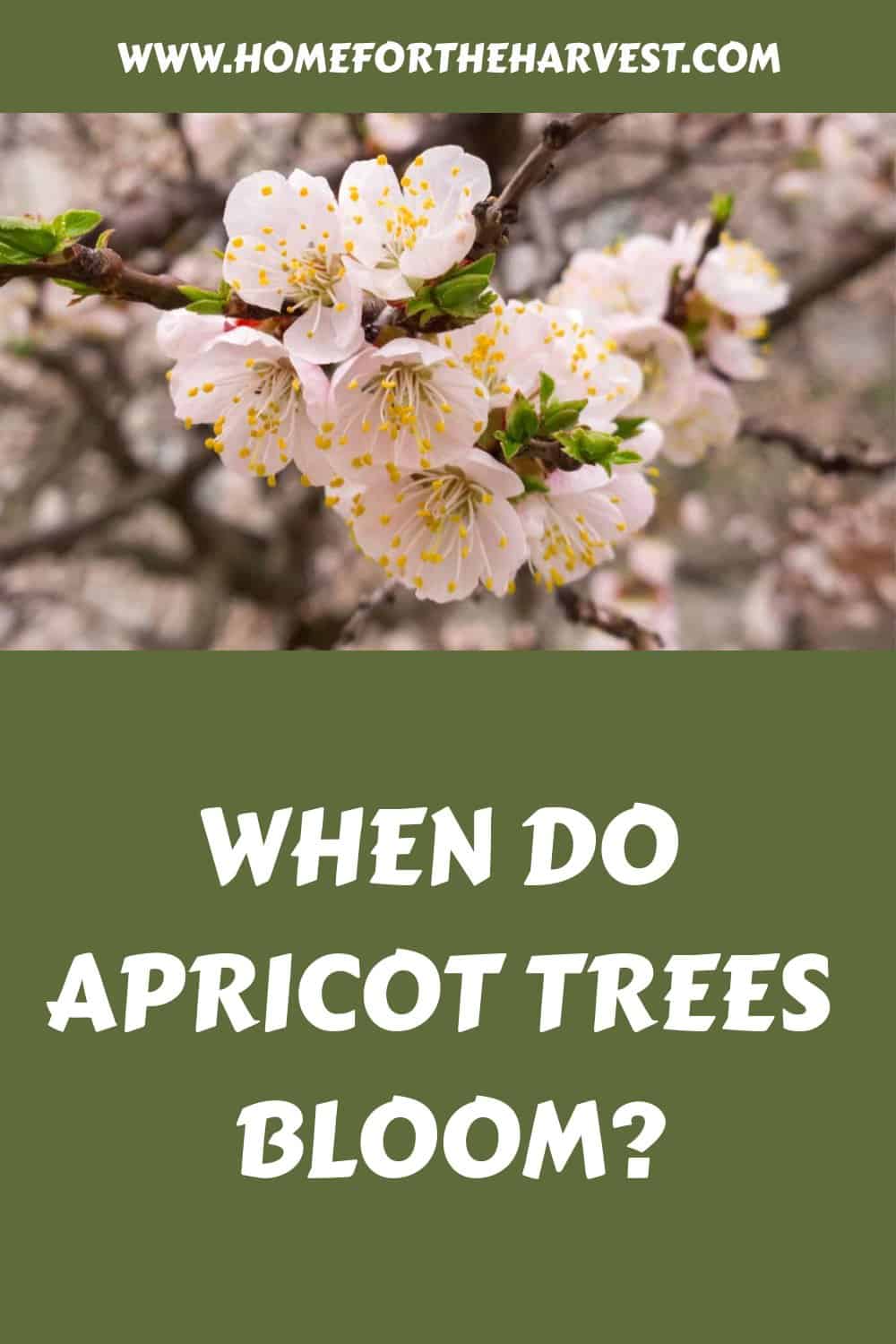Wondering when apricot trees bloom? These trees are just as prized for their gorgeous blossoms as they are for their decadent fruit.
Apricot trees bloom in early spring, usually flowering before most other fruit trees. The exact time varies depending on the climate, but typically, the blossoms appear in March or early April. There is also variation by cultivar. Each different variety of apricot tree is classified into either early, mid, or late blooming within the overall early spring bloom season.
Read on to learn all about when apricot trees bloom!
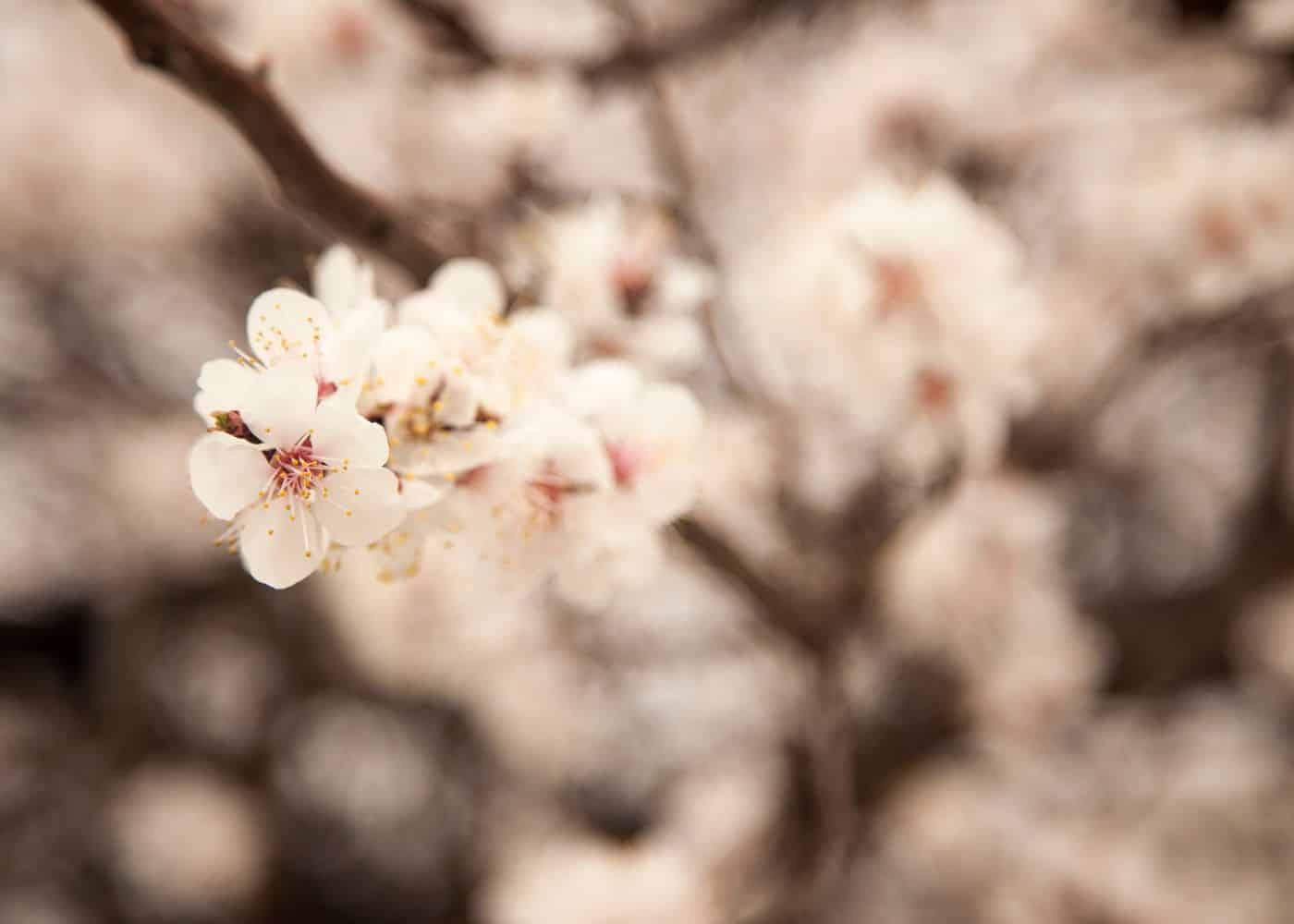
When do apricot trees bloom
Apricot trees usually bloom in early April. They may bloom as early as late February where winters are mild and can bloom as late as the end of April or even into early May when winters are harsh.
Apricots are among the first stone fruit trees to bloom in the spring. Growing apricot trees can be a bit risky in some climates as the tender blossoms can be damaged by frost. Serious cold damage to the blossoms can stop the tree from producing delicious apricots that year.
There are lots of different apricot tree varieties and they all blossom and bear fruit at slightly different times. Some apricots are partially self-fruitful, but many need a pollination partner for a full crop.
A pollination partner is a second apricot tree of a different variety with a bloom period that overlaps so that pollinating insects can carry pollen between the two different trees. These two apricot trees usually need to be within 100 feet of each other to be effective. That said, some apricots are self-fruiting (but produce much more fruit with a second compatible variety nearby).
“Apricots are native to cold-winter climates where subsequent spring weather warms steadily and reliably. Being adapted to such climates, apricots tend to come out of their dormancy quickly, leaving them prone to the later spring frosts that are so common in regions beyond their native range.”
Landscaping with Fruit, by Lee Reich
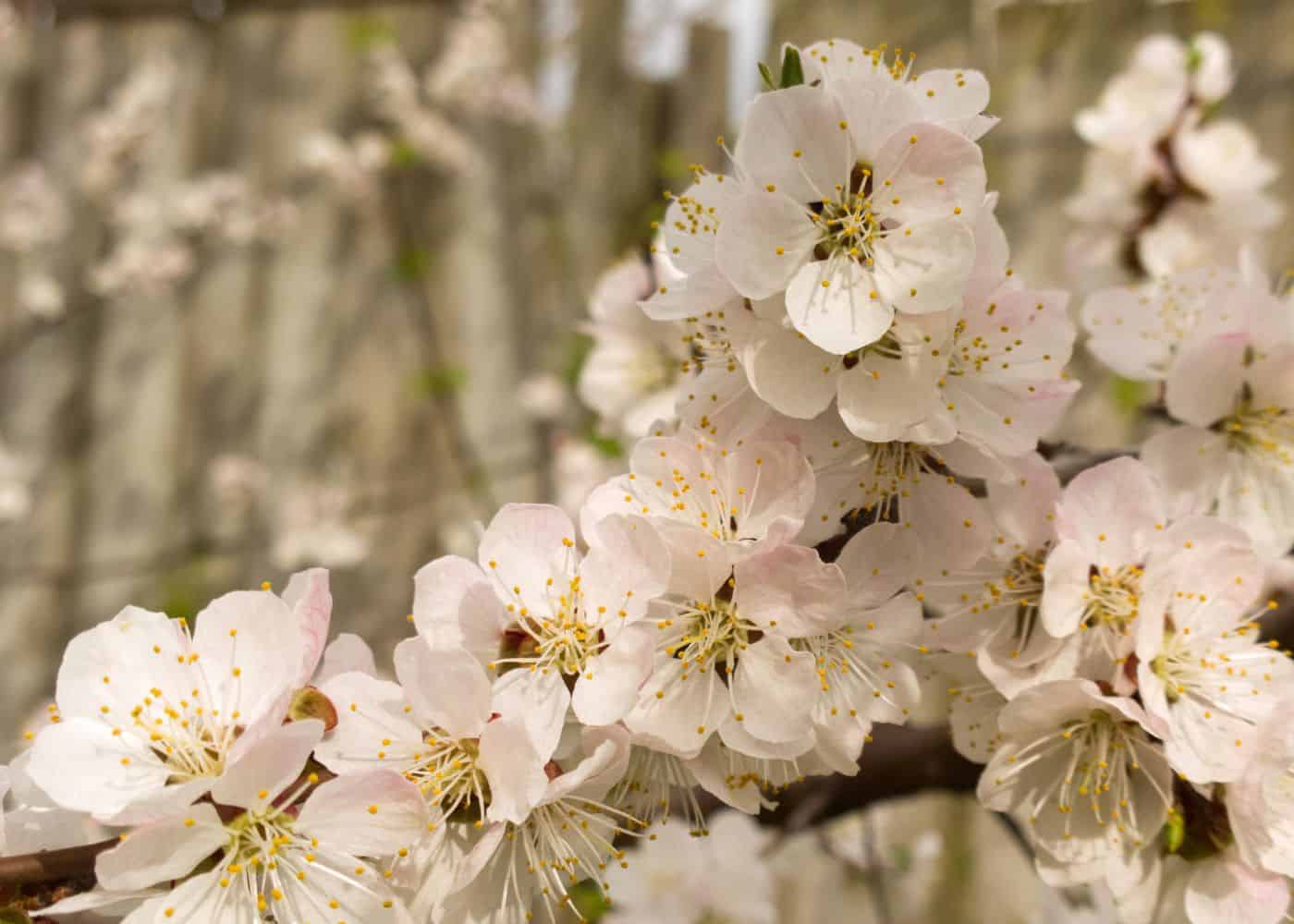
Bloom time variations by cultivar
Varieties with low chilling requirements such as UK heirlooms ‘Moorpark’ Apricot and ‘Blenheim’ Apricot, tend to bloom very early. These varieties tend to be grown in warmer climates such as California.
Varieties bred in Canada for cold-hardiness, such as Harglow’ Apricot and ‘Harlayne’ Apricot tend to bloom relatively late. These varieties are better suited to areas prone to spring cold snaps that may damage earlier blossoms.
Early-blooming apricot varieties
- ‘Hale’s Early’
- ‘Moorpark’
- ‘Blenheim’
- ‘Pui Sha Sin’
- ‘Early Blush’
- ‘SunGem’
- ‘Fracasso’
- ‘Litoral’
- ‘Tomcot’
Mid-season blooming apricot varieties
- ‘Harcot’
- ‘Goldcot’
- ‘Goldstrike’
- ‘Goldbar’
- ‘Goldrich’
- ‘Rival’
- ‘Hargrand’
- ‘Harogem’
- ‘Orange Red’
- ‘Selena’
- ‘Perfection’
- ‘Sulmona’
Late-blooming apricot varieties
- ‘Alfred’
- ‘Harlayne’
- ‘Tilton’
- ‘Sirena’
- ‘Goldrich’
- ‘Harglow’
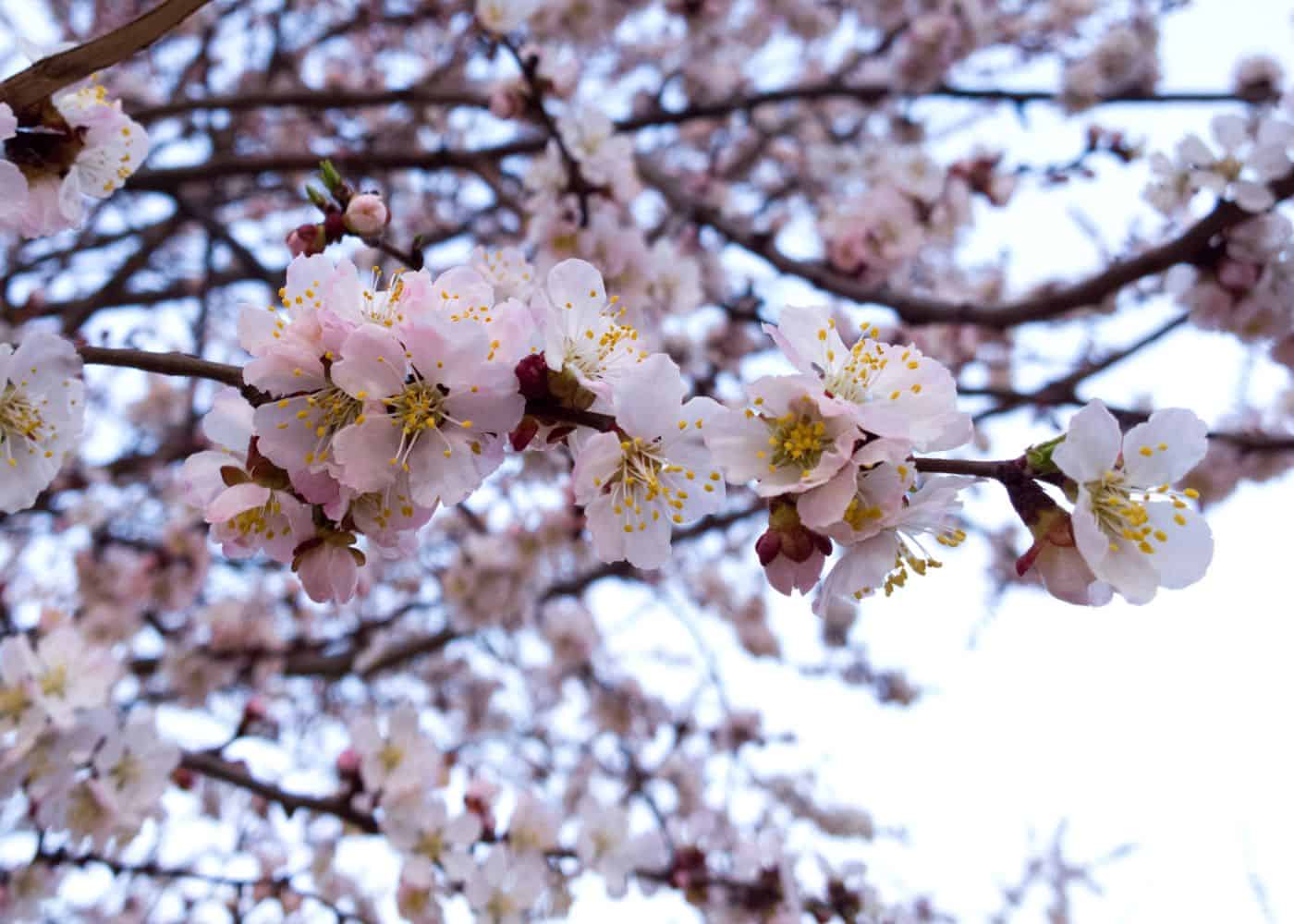
Caring for apricot trees during the blooming season
Once you have your apricot tree, it’s important to give it the care it needs to thrive.
Water the trees regularly as they blossom. A liquid seaweed fertilizer can also be applied at this time. If brown rot, shot hole fungus, or other apricot diseases are a problem, spray the tree with organic fungicide as the flowers start to open. You can also paint the base of the trunk with diluted interior latex paint to minimize sunscald and the likelihood of peach borer.
Spring apricot pruning
Early spring is a good time to prune your apricot tree. Pruning helps to shape the tree and encourages strong fruit production.
Remove any branches that are dead, damaged, or diseased. Take them right back to about an inch from the main stem they are growing off of.
Next, thin out the tree by removing any particularly old branches. This will make room for air circulation and for light, both of which lessen disease.
Lastly, make a few heading cuts to stimulate new shoot growth. Apricots grow their fruit on shoots that are 1-3 years old, so it’s good to be encouraging a few new fruiting stems each year.
Apricot trees set their flower buds in the summer and fall, and the buds then sit dormant through the winter waiting to open up in early spring. Because of this, know that any pruning you do will remove some of the fruits. This is generally ok though, as the remaining fruits tend to be larger and more flavorful. Proper pruning also usually means you don’t have to manually thin the baby fruit by hand after the tree blossoms.
Spring fertilizing
Bloom is the perfect time to fertilize your apricot tree! Give it a good dose of nitrogen to encourage strong spring growth as the soil warms. Just be sure not to overdo the nitrogen. Too much will result in lots of leafy growth but fewer flowers and fruits.
Weeding and mulching
It’s also important to keep the area around your apricot tree free of weeds and well-mulched. This helps to conserve moisture, reduce competition for nutrients, and discourage pests and diseases.
Watering apricot trees
Be sure to give your apricot tree plenty of water during bloom season. Apricots are relatively drought-tolerant once they are established, but during bloom is when they are setting their fruit for the season. They need about 1-2 inches of water per week, either from rainfall or from irrigation.
Frost protection
If you live in an area with harsh winters, be sure to protect your apricot tree from frost damage. Keep an eye on the forecast and take steps to protect your tree if there is a chance of frost. Covering the tree with a sheet or tarp can help to trap heat and prevent frost damage.
Dealing with pests and diseases
Unfortunately, apricots are susceptible to several pests and diseases. The good news is that many of these can be controlled with proper care and treatment.
Some common apricot pests include:
- Aphids – These small, sap-sucking insects can damage leaves and stunt growth. They also excrete a sticky substance that can attract ants. You can control aphids with a strong stream of water from the hose or with insecticidal soap.
- Caterpillars – Caterpillars can cause extensive damage to apricot trees, eating leaves and fruit. You can control caterpillars with Bacillus thuringiensis (BT), a biological insecticide.
- Moths – Apricot moths lay their eggs on the undersides of leaves. The larvae then hatch and burrow into the fruit, causing damage. You can control moths with pheromone traps.
Some common apricot diseases include:
- Bacterial canker – This disease is caused by a bacterial infection and can lead to dieback of branches and fruit rot. Bacterial canker is difficult to control, but you can remove infected branches and destroy them.
- Brown rot – This fungal disease causes fruit to brown and rot. It can also spread to twigs and branches, causing dieback. You can control brown rot by pruning infected areas and destroying them.
- Powdery mildew – This fungal disease appears as a white powder on the leaves and stems of apricot trees. It can cause leaves to yellow and drop off. You can control powdery mildew with sulfur-containing organic fungicides.
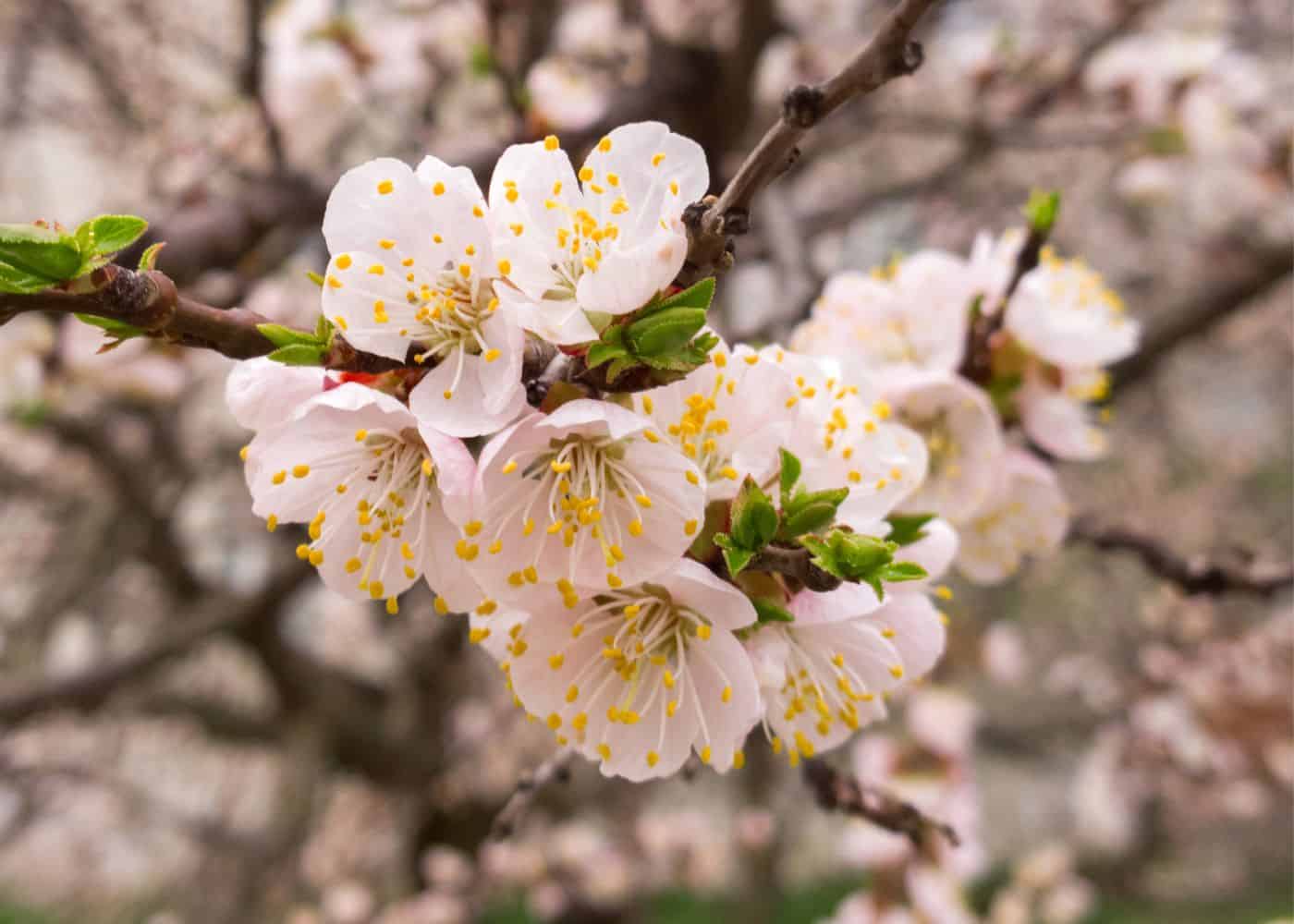
More spring apricot tips
Spring is also a wonderful time to plant apricot trees in your yard or orchard! Look for a place with good sun exposure and well-drained soil.
Most apricot varieties need more than one tree (and more than one variety) to set fruit. The varieties need to overlap in terms of the bloom period to produce fruit. Producing fruit is easiest if multiple varieties are planted in a close area for cross-pollination (even with self-pollinating varieties).
Each variety also has a certain requirement for “chill hours” to consider if you live in a warmer growing climate such as California. Later blooming varieties tend to have higher chill hour requirements than early varieties. Early bloomers have been bred for warm climates with low chill hours and a lower chance of a late frost.
To grow apricot trees in cooler climates like New York, look for late-blooming varieties that are less likely to be damaged by sudden cold snaps and surprise late frosts.
With proper care, your apricot tree should be healthy and productive for many years to come!
References
- Landscaping with Fruit, by Lee Reich
- BC Tree Fruit Production Guide, Apricot Varieties
- Growing Apricots in California: An Overview, by Maxwell Norton and William Coates, University of California Cooperative Extension
- Virginia Tech, Apricot Variety Evaluations in Virginia
- University of California, The California Backyard Orchard, Apricot (Prunus armeniaca L)


